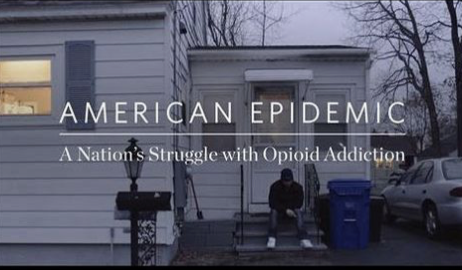OPIOID ADDICITON – THE BEGINNING OF THE END

BY OLIVIA WALLON – What do Penn State, Ohio State, Michigan State, and Arizona State University have in common? They all are ranked in the top 10 colleges with the largest undergraduate classes, averaging at about 42,000 undergraduate students enrolled in fall 2017. 42,000 stories, 42,000 families, 42,000 lives. Now imagine that in one year, all of the students on one of those campuses vanish. It seems impossible for that many people to vanish, but in the case of opioid overdoses, it’s just another year.
Opioids are medications prescribed by doctors to treat severe pain. They are able to block the pain signals meant to reach the brain, resulting in effective pain relief. Although they are useful, they are highly addictive. This is due to the drug’s ability to tamper with the brain’s reward system. The trebuchet of opioid addiction begins when the first high fades away. Administering opioids, especially frequently, results in a euphoric high, one that the reward system cannot duplicate alone. For individuals struggling with opioid addiction, the happiest moments in life become dull. Their body craves those feel-good moments, eventually spiraling into a life controlled finding opportunity, regardless of the danger, for the next high.
In 2017, after a record-breaking 47,600 deaths due to opioids, the U.S. Department of Health and Human Services(HHS) declared a nationwide public health emergency. A 5-point strategy was implemented to finalize the HSS’s priorities; improving access to treatment and recovery, promoting overdose-reversing drugs, further analyzation of the epidemic, supporting research, and finding better pain management practices.
As of 2019, a complicated solution is being considered for the treatment of pain and opioid addiction, medical marijuana. Marijuana has two main chemicals; tetrahydrocannabinol (THC) and cannabidiol (CBD). Recreational marijuana, which is used without medical justification, has high levels of THC resulting in a “high.” Medical marijuana has low levels of THC and high levels of CBD, posing strictly medicinal effects (meaning no high but pain relief). Marijuana has different strains; there are options with differing levels of CBD and THC. most states, like Florida, are legalizing medical marijuana but not recreational marijuana.
A focus on cannabidiol treatments gives individuals the potential to avoid being prescribed opioids for pain relief. In fact, current studies have suggested that medical cannabis leads to a 33% reduction in the use of opioids. The pain reducing benefits of CBD oil have also been reported with patients suffering arthritis, multiple sclerosis, and overall chronic pain. In fact, as of June 2018, the U.S Food and Drug Administration approved one form of CBD to treat individuals suffering with epilepsy; specifically Dravet syndrome and Lennox-Gastaut syndrome.In most studies involving the use of CBD pain treatment, individuals reported a reduction in pain, not total absence of symptoms.
In the discussion of opioid addiction, CBD may have therapeutic properties, based on preliminary data. It may be used to replace the need of an opiod for pain relief. Limited studies have also suggested CBD oil may be an appropriate medication used to treat opioid withdrawal symptoms. In some cases, patients have used CBD tinctures to slowly lower their opioid dosage, reporting a lack of the horrible withdrawals that make overcoming addiction so difficult.
Although there have been theorized and tested benefits to integrating cannabis use in pain and opioid withdrawal treatment, there are some potential downsides, specifically when dealing with high THC levels. Systematic reviews have found that there is a higher risk of motor accidents, changes in brain structure, psychotic symptoms, and cognitive impairment. Cannabis addiction is also a threat, despite the theorized impossibility to overdose on cannabis. Risks can also include a greater risk of other substance abuse disorders. All risks must be taken with caution due to the limited verifiable research. Before implementing cannabis treatments, medical standards are clinical testing are required.
The odds of dying in a car accident are smaller than the chances of overdosing on an opioid. In a lifetime of 78 years, people in the United States are less likely to pass away from pedestrian accidents, falls, drowning, and fire than succumb to an opioid overdose. In a society that ensures to teach its individuals the basics and common dangers of fires, cars, and swimming, there is little discussion about the severity of opioid abuse. Knowledge, support, and implementation of new chronic pain solutions, even as debatable as cannabis, should be considered. Dr. Nora Volkow, National Institute of Drug Abuse Director, remarked “In all my years as a physician, I have never, ever met an addicted person who wanted to be an addict.” 2019 has potential for advances to end the opioid epidemic. Cannabis alone will not relieve the United States of the opioid epidemic, but it does have the potential to work cohesively with other aspects.
For Those Struggling with Addiction:
SAMHSA’s National Helpline – 1-800-662-HELP (4357)
Opiate Addiction Hotline – 1-888-633-3239
